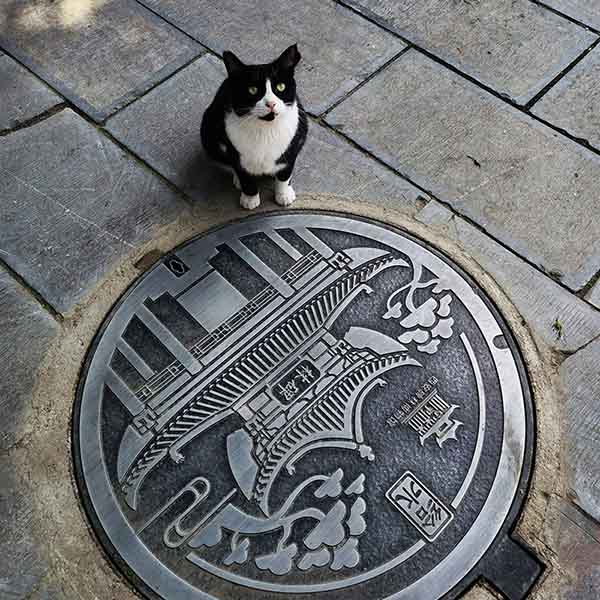Manhole covers, as an important component of urban infrastructure, are closely related to the development of human urban civilization throughout history. Here is the main development process of manhole covers:
I. Ancient Prototype: Simple Coverings
As early as when drainage systems emerged in ancient cities, people began to cover the well mouths with simple materials. For instance:
– Ancient Egypt and Mesopotamia: Around 3000 BC, there were clay pipes and stone-covered drainage ditches. The manholes might have been temporarily covered with stones or wooden boards.
– Ancient Rome: The famous “Cloaca Maxima” in the “Mars Square” was built in the 6th century BC. The manholes might have been covered with thick stone slabs or metal grilles, serving both drainage and protection functions.
II. The Birth of Modern Manhole Covers after the Industrial Revolution (19th Century)
In the 19th century, with the acceleration of urbanization, the modern concept of manhole covers gradually took shape:
1. Material Innovation: Application of Cast Iron
– In 1832, British engineers designed the first cast iron manhole covers for the London sewer system. Due to its high strength and strong corrosion resistance, cast iron became the mainstream material. Manhole covers began to be standardized for production, and a distinctive circular design (to prevent falling and ensure uniform force distribution) emerged.
– During the London World Expo in 1851, improved cast iron manhole covers were introduced with anti-slip patterns and load-bearing structures, laying the basic form for modern manhole covers.
2. Function Refinement and Standardization
– European countries (such as France and Germany) successively formulated manhole cover standards, distinguishing them by load-bearing grades (such as for sidewalks and lanes), and labeling their purposes (such as for sewers, gas, and electricity).
– In the late 19th century, the United States introduced cast iron manhole covers for the rapid expansion of urban water supply networks. Some manhole covers were engraved with manufacturer logos or city emblems.
III. The 20th Century: Technological Improvements and Diversified Development
1. Diversification of Materials
– Concrete manhole covers: They were widely used in the early 20th century, with low cost and suitable for areas with light loads (such as parks and sidewalks).
– Composite materials: Later, resin and glass fiber manhole covers emerged, which are lightweight and have anti-theft features (no recycling value), but have slightly lower strength. They are mostly used in non-load-bearing scenarios.
2. Safety and Design Upgrades
– Fall Prevention and Anti-theft: After the 1950s, manhole covers were equipped with fall prevention nets and locking devices to reduce safety hazards. Japan invented the “five-dimensional fall prevention” structure to enhance sealing performance.
– Artistic and Regional Characteristics
– Since the 1980s, Japan has promoted “manhole cover art”, integrating local culture (such as scenic spots, animals and plants) into the design, making it a city’s brand (such as the cherry blossom manhole covers in Kyoto, and the snowflake manhole covers in Hokkaido).
– Creative manhole covers have also emerged in European and American cities, such as the metro logo manhole covers in Paris and the artistic graffiti manhole covers in New York.
IV. Contemporary: Intelligence and Sustainability
Since the 21st century, manhole covers have been adapted to the demands of smart cities through integration with new technologies:
– Intelligent manhole covers: Equipped with built-in sensors to monitor water levels, gas leaks, and displacement, and transmitting real-time data through the Internet of Things (such as pilot projects in Shenzhen and Tokyo).
– Environmentally friendly materials: Promoting recycled plastic and recycled concrete manhole covers to reduce carbon emissions; some manhole covers integrate solar panels to power surrounding equipment.
– Humanized design: Anti-slip and noise reduction treatments, even integrating functions such as seats and greenery to enhance the utilization rate of urban space.
V. Cultural Symbols and Historical Impressions
Manhole covers are not only practical facilities but also serve as carriers of urban memories:
– The “coin minting factory manhole covers” in London are engraved with the Royal Emblem of the United Kingdom. The “Pantheon manhole covers” in New York commemorate historical buildings. The manhole covers in Japan have been listed as “urban landscape heritage”.
– In 2018, France included manhole covers in its “industrial cultural heritage” and held a biennial exhibition of manhole cover design, highlighting their technical and aesthetic value.
The history of manhole covers is a microcosm of urban evolution: from practical coverings in ancient times, to standardized products in the industrial era, and to intelligent art carriers in modern times, it has always evolved along with technological, demand and cultural changes, silently witnessing humanity’s pursuit of urban safety and beauty.
